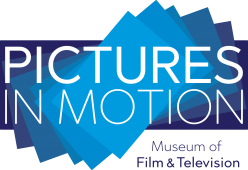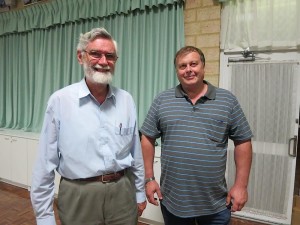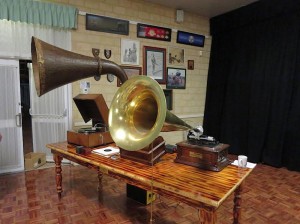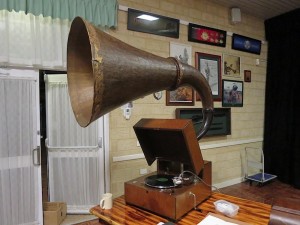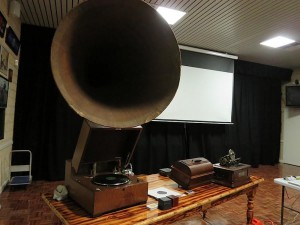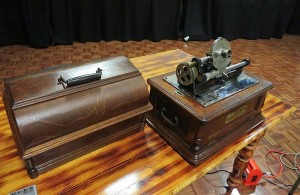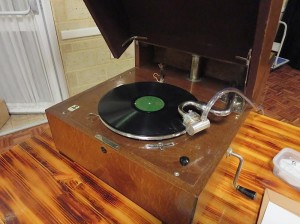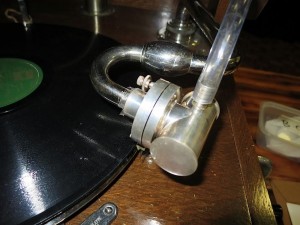On Wednesday 16th of March 2016, Perth science-teacher-turned-history-author and founder of the Light and Sound Discovery Centre, Richard Rennie, gave a presentation to the members of the Australian Museum of Motion Picture and Television (AMMPT) on the coming of synchronised sound to WA cinemas. Also present were Steve Austin and Rodney House of the Vintage Wireless and Gramophone Club of WA, from where much of the equipment was kindly provided.
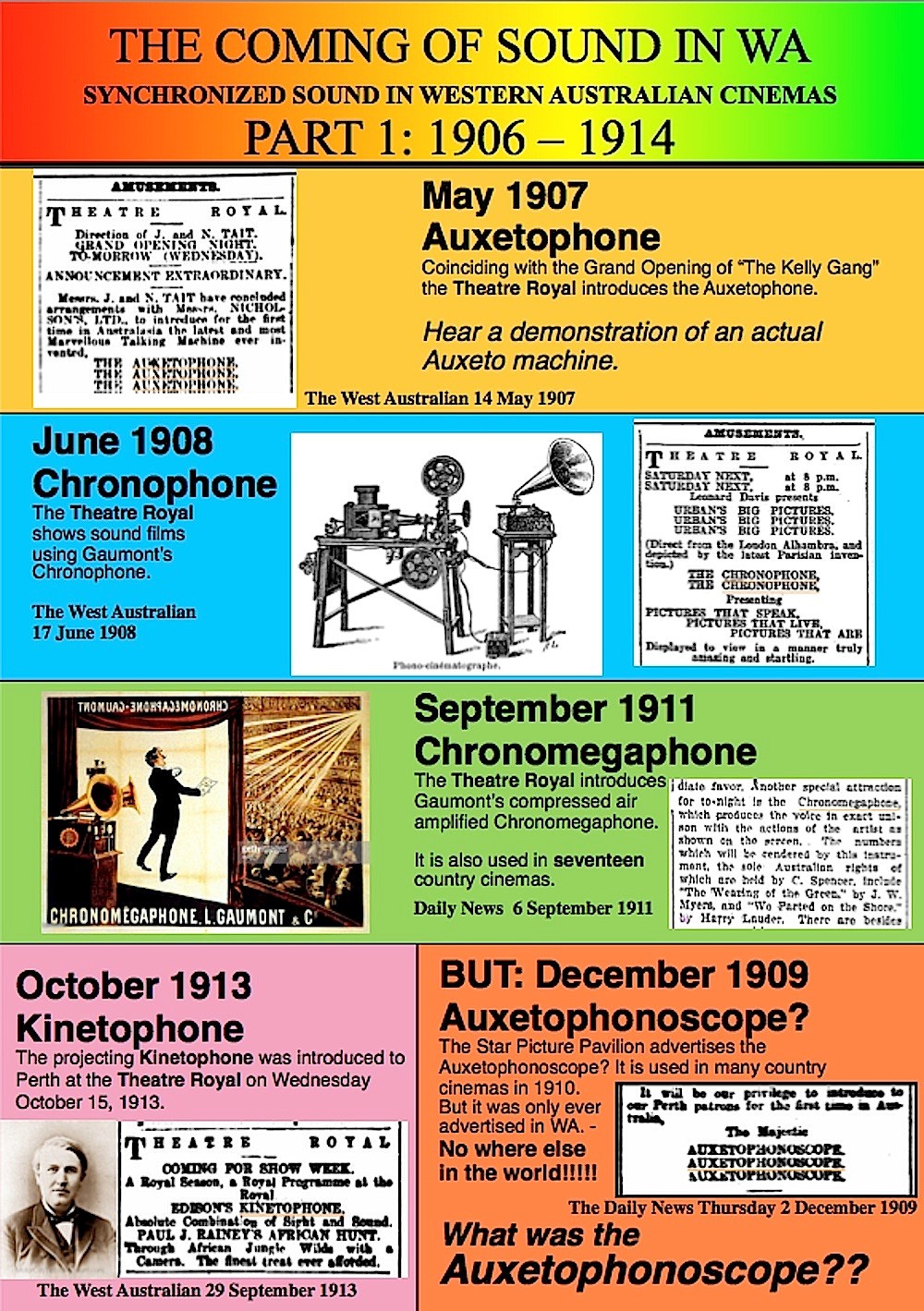
The equipment shown demonstrated early attempts at providing amplified sound, before the advent of the thermionic valve amplifier. One used a compressed air process that was invented in 1899, then further developed in 1904 and marketed by Victor in 1906. The other machine incorporated a Higham Amplifier, where in between the stylus and the reproducer diaphragm, is an amber wheel which revolves simultaneously with the cylinder. The amber wheel acted upon a hard rubber shoe where the harder surface provided larger vibrations and thus louder noise. This Columbia Model Gramophophone was launched in 1905.
Richard Rennie and Steve Austin
Many of these devices had extraordinary names such as the Auxetophone, which was demonstrated in Perth in 1907, to play records to the Theatre Royal audience.
In 1908, the Gaumont Chronophone was demonstrated at the Theatre Royal, followed by the German Wonderfraph and Auxetophonscope in 1909.
The equipment shown demonstrated early attempts at providing amplified sound, before the advent of the thermionic valve amplifier.
In 1911 the Chronomegaphone was demonstrated at the Theatre Royal until its final performance at the Esplanade Gardens in 1914.
Edison’s projecting Kinetophone made an appearance in 1913.
World War One intervened on 28 July 1914 and lasted until 11 November 1918, when energies thereafter were devoted to the war effort.
It was another decade before the sound film era began again in earnest.
The Prince of Wales was one of the two cinemas to introduce sound films to Perth on 6 April 1929, while the Regent screened The Red Dance (1928) using variable density sound-on-film, which contained music and no recorded dialogue, the Prince of Wales presented Warner’s The Jazz Singer (1927), using the Vitaphone sound-on-disc, though this movie was mostly silent, with segments of recorded dialogue and lip sync songs. The quality of the the sound-on-disc was then superior to the early sound-on-film, though this was to change with the development of variable area sound-on-film.
The Prince of Wales theatre was sited in Murray Street, Perth, near the spot where the underground train station is now located. The Regent Theatre was located in William Street next to the Queen’s Building. The Art Deco Metro Theatre also occupied this site from 1938 to 1973.
